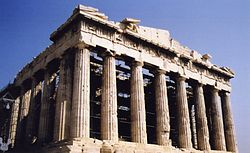- A brief account of the history of logic, from the The Oxford Companion to Philosophy (edited by Ted Honderich), OUP 1997, 497-500.
- A biography of Peter Abelard, published in the Dictionary of Literary Biography Vol. 115, edited by Jeremiah Hackett, Detroit: Gale Publishing, 3-15.
- Philosophy in the Latin Christian West, 750-1050, in A Companion to Philosophy in the Middle Ages, edited by Jorge Gracia and Tim Noone, Blackwell 2003, 32-35.
- Ockham wielding his razor!
- Review of The Beatles Anthology, Chronicle Books 2000 (367pp).
- A brief discussion note about Susan James, Passion and Action: The Emotions in Seventeenth-Century Philosophy.
- Review of St. Thomas Aquinas by Ralph McInerny, University of Notre Dame Press 1982 (172pp). From International Philosophical Quarterly23 (1983), 227-229.
- Review of William Heytesbury on Maxima and Minima by John Longeway, D.Reidel 1984 (x+201pp). From The Philosophical Review 96 (1987), 146-149.
- Review of That Most Subtle Question by D. P. Henry, Manchester University Press 1984 (xviii+337pp). From The Philosophical Review 96 (1987), 149-152.
- Review of Introduction to the Problem of Individuation in the Early Middle Ages by Jorge Gracia, Catholic University of America Press 1984 (303pp). From The Philosophical Review 97 (1988), 564-567.
- Review of Introduction to Medieval Logic by Alexander Broadie, OUP 1987 (vi+150pp). From The Philosophical Review 99 (1990), 299-302.
Monday, December 28, 2009
"Charles Hartshorne and the existence of God" by Donald Wayne Viney,1985
..
PROCESS THEOLOGY
PROCESS THINKING
HERACLITUS
The intellectual movement with which Hartshorne is associated is generally referred to as process theology.
The roots of process thinking can be found in the Greek philosopher Heraclitus.
CONTEMPORARY PROCESS PHILOSOPHY
ALFRED NORTH WHITEHEAD
Contemporary process philosophy arose from the work of Alfred North Whitehead, while Hartshorne is identified as the seminal influence on process theology that emerged after World War Two.
The key motifs of process philosophy are:
a.empiricism,
b.relationalism,
c.process and
d.events.
The motif of empiricism in process thought :
refers to the theme that experience is the realm for defining meaning and verifying any theory of reality.
Unlike classical empiricism, process thought takes the category of thinking beyond just the human senses of perception. Experiences are not confined to sense perception or consciousness, and there are pre-sensual, pre-conscious experiences from which consciousness and perception derive.
The motif of relationalism :
refers to both experiences and relationships.
Humans experience things and also experience the relationship between things.
The motif of process :
means that all time, history and change are in a dynamic evolutionary process.
The final motif of events :
refers to all the units (organic and inorganic) of the world.
While Hartshorne acknowledges the importance of Whitehead's philosophy on his own ideas, he did not entirely agree with Whitehead.
DI-POLAR DEITY
In Hartshorne's process theology God and the world exist in a dynamic, changing relationship.
God is a 'di-polar' deity.
By this Hartshorne meant that God has both abstract and concrete poles.
The abstract pole refers to those elements within God that never vary,such as God's self-identity,
while the concrete pole refers to the organic growth in God's perfect knowledge of the world as the world itself develops and changes.
CREATIO EX MATERIA
Hartshorne did not accept the classical theistic claim of creatio ex nihilo (creation out of nothing), and instead held to creatio ex materia (creation out of pre-existent material).
PAN-EN-THEISM
KARL CHRISTIAN FRIEDRICH KRAUSE,1828
ALL IS IN GOD
One of the technical terms Hartshorne used is pan-en-theism, originally coined by Karl Christian Friedrich Krause in 1828.
Panentheism (all is in God) must be differentiated from
Pantheism (all is God).
In Hartshorne's theology God is not identical with the world,
but God is also not completely independent from the world.
God has his self-identity that transcends the earth,
but the world is also contained within God.
A rough analogy is the relationship between a mother and a fetus. The mother has her own identity and is different from the unborn, yet is intimately connected to the unborn. The unborn is within the womb and attached to the mother via the umbilical cord.
ONTOLOGICAL ARGUMENT
ANSELM
GOD IS THAT THAN WHICH NO GREATER CAN BE CONCEIVED
Hartshorne reworked the ontological argument for God's existence as promulgated by Anselm. In Anselm's equation, "God is that than which no greater can be conceived." Anselm's argument used the concept of perfection.
Hartshorne accepts that by definition God is perfect.
CHRISTIAN THEISM
However, Hartshorne maintains that classical Christian theism has held to a self-contradictory notion of perfection.
He argues that the classical concept of God fails.
Hartshorne posited that God's existence is necessary and is compatible with any events in the world. In the economy of his argument Hartshorne has attempted to break a perceived stalemate in theology over the problem of evil and God's omnipotence.
For Hartshorne, perfection means that God cannot be surpassed in his social relatedness to every creature. God is capable of surpassing himself by growing and changing in his knowledge and feeling for the world.
DEISM - PANDEISM
Hartshorne acknowledged a God capable of change, as is consistent with pandeism, but early on he specifically rejected both deism and pandeism in favor of panentheism, writing that "panentheistic doctrine contains all of deism and pandeism except their arbitrary negations".
IMMORTALITY OF HUMAN SOULS
Hartshorne did not believe in the immortality of human souls as identities separate from God, but explained that all the beauty created in a person's life will exist for ever in the reality of God.
This can be understood in a way reminiscent of Buddhism, namely that a person's identity is extinguished in one's ultimate union with God, but that a person's life within God is eternal. Hartshorne regularly attended services at several Unitarian Universalist churches, and joined the First Unitarian Universalist Church in Austin, Texas.
Subscribe to:
Post Comments (Atom)





No comments:
Post a Comment